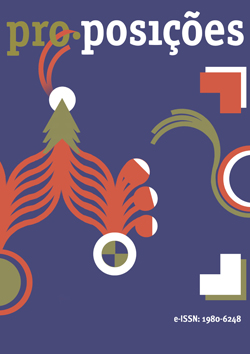Abstract
Foreign language didactics offers several possibilities to guide learning and teaching processes in the classroom that enrich the teacher’s pedagogical teaching practices in this area. Currently, one of the most recognized and applied possibilities is the Task-based Approach. Among other things, this Approach has broken the traditional paradigm about teacher-students’ vision, where the teaching becomes student-centered, and promoted the Communicative Competence development. Nevertheless, even though such approach addresses certain cultural aspects issued by the acquisition of the Communicative Competence, it might disregard transversal elements such as the Intercultural Communicative Competence. Hence, this article aims at sending out a didactical possibility that merges the principles of the Task-based Approach (Nunan, 2004; Willis, 1996) with the characteristics of the Intercultural Communicative Competence (Byram, 1997; Galindo, Loaiza y Botero, 2013) which is the result of a reflection upon the Foreign Languages Didactics. Thereby, this article displays a theoretical discussion focused on the Task-based Approach and the Intercultural Communicative Competence resulting in the creation of a tangible didactic unit that combines the most important contributions from these two theoretical underpinnings.
References
Bachman, L. (1990). Constructing Measures and Measuring Constructs. In B. Harley, J. Cummins, M. Swain, & P. Allen. (Eds.), The Development of Second Language Proficiency (pp. 26-38). Cambridge University Press.
Block, D. (2007). Second Language Identities Continuum
Bourse, M. (2008). Interculturel ou multiculturel: itinéraires sémantiques et evolution idéologique. Signes, discours, sociétés, 1 Recuperado de: http://www.revue-signes.info/document.php?id=495
Brandl, K. (2007). Communicative Language Teaching in Action: putting principles to work Pearson.
Breen, M., & Candlin, C. N. (1980). The essentials of a communicative curriculum in language teaching. Applied Linguistics, 1, 89-112. doi:10.1093/applin/1.2.89
Bronckart, J. P. (1997). Teorías de la acción, lenguaje, lenguas naturales y discurso. In J. Wertsch, A. Alvarez, & P. del Río (Eds.), La mente sociocultural. Aproximaciones teóricas y aplicadas (pp. 63-76). Fundación Infancia y Aprendizaje.
Byram, M. (1997). Teaching and Assessing Intercultural Communicative Competence Multilingual Matters.
Byram, M., & Fleming, M. (2001). Perspectivas interculturales en el aprendizaje de idiomas. Enfoques a través del teatro y la etnografía Cambridge University Press.
Byram, M., Gribkova, B., & Starkey, H. (2002). Developing the Intercultural Dimension in Language Teaching. A practical Introduction for Teachers Council of Europe.
Canale, M. (1983). De la competencia comunicativa a la pedagogía comunicativa del lenguaje. In J. C. Richards, & R. W. Schmidt (Eds.), Language and communication London: Longman. Recuperado de: http://cvc.cervantes.es/Ensenanza/biblioteca_ele/antologia_didactica/enfoque_comunicativo/canale01.htm
Canale, M., & Swain, M. (1980). Theoretical bases of communicative approaches to second language teaching and testing. Applied Linguistics Journal, 1(1), 1-47.
Chomsky, N. (1965). Aspects of the Theory of Syntax MIT Press.
Consejo de Europa. (2002). Marco común europeo de referencia para las lenguas: aprendizaje, enseñanza, evaluación (Instituto Cervantes, trad.). Anaya.
Cultura. (2002). En Diccionario de la lengua española (edición del tricentenario). Recuperado de: http://dle.rae.es/?id=BetrEjX
Delors, J. (1996). Los cuatro pilares de la educación. Informe a la UNESCO de la Comisión internacional sobre la educación para el siglo XXI Santillana/UNESCO.
Ellis, R. (2003). Task-based language learning and teaching Oxford University Press.
Ellis, R. (2010). The methodology of task-based teaching. Proceedings of the Asian EFL Journal Cebu Conference (6-23). Recuperado de: http://asian-efl-journal.com/4101/quarterly-journal/2009/12/the-methodology-of-task-based-teaching-2/#squelch-taas-tab-content-0-3
Estaire, S. (2009). El aprendizaje de lenguas mediante tareas de la programación al aula Editorial Edinumen.
Estaire, S., & Zanón, J. (1990). El diseño de unidades didácticas para la enseñanza de una segunda lengua. Comunicación, lenguaje, y educación, 7-8, 55-90.
Fantini, A. E. (2000). A central concern: developing intercultural competence. Adapted in part from a report by the intercultural communicative task force World Learning.
Galatanu, O. (2011). Les valeurs affectives des marqueurs discursifs illocutionnaires en français et en anglais. In S. Hancil (Ed.), Marqueurs discursifs et subjectivité (173-190). PURH.
Galindo, A., Loaiza, N., Botero, M. A. (2013). Bilingüismo, biliteracidad y competencia intercultural Kinesis.
Hall, E. (1998). The Power of Hidden Differences. In M. Bennett (Ed.), Basic Concepts of Intercultural Communication (53-68). Intercultural Press.
Halliday, M. (1973). Explorations in the Functions of Language Edward Arnold.
Hofstede, G. (1997). Cultures and organizations: software of the mind McGraw Hill.
Hymes, D. (1972). On Communicative Competence. In J. B. Pride, & J. Holmes (Eds.), Sociolinguistics Selected Readings (269-293). Penguin.
Jakobson, R. (1985). Ensayos de lingüística general Planeta Agostini.
Kramsch, C. (1998). Language and Culture Oxford University Press.
Kumaravadivelu, B. (2006). Understanding language teaching: from method to postmethod Lawrence Erlbaum.
Labov, W. (1972). Sociolinguistic Patterns University of Pennsylvania Press.
Lee, J. (2000). Tasks and communicating in language classrooms McGraw Hill.
Littlewood, W. (1981). Communicative Language Teaching: An Introduction Cambridge University Press.
Moreno, F. (2007). Adquisición de segundas lenguas y sociolingüística. Revista de Educación, 343, 55-70.
Nunan, D. (2004). Task-Based Language Teaching Cambridge University Press.
Prabhu, N. (1987). Second Language Pedagogy. Oxford University Press.
Richards, J. (2006). Communicative Language Teaching Today Cambridge University Press.
Richards, J., & Schmidt, R. (1983). Language and Communication Longman.
Rico Troncoso, C. (2012). Language teaching materials as mediators for ICC development: a challenge for materials developers. Signo y Pensamiento, 31(60), 130-154.
Rico Troncoso, C. (2018). La competencia comunicativa intercultural (CCI) en los contextos de enseñanza del inglés como lengua extranjera. Signo y Pensamiento, 37(72), 77-94. doi:10.11144/Javeriana.syp37-72.ccic
Saussure, F. (1916). Course in General Linguistics Duckworth.
Stern, H. (1983). Fundamental concepts of language teaching Oxford University Press.
Van Dijk, T. (2007). Cincuenta años de estudios del discurso. Discurso & Sociedad, 9(1-2), 15-32.
Willis, J. (1996). A Framework for Task-based Learning Longman.

This work is licensed under a Creative Commons Attribution 4.0 International License.
Copyright (c) 2021 Marcela Herrera-Torres, Claudia Milena Pérez-Guerrer


